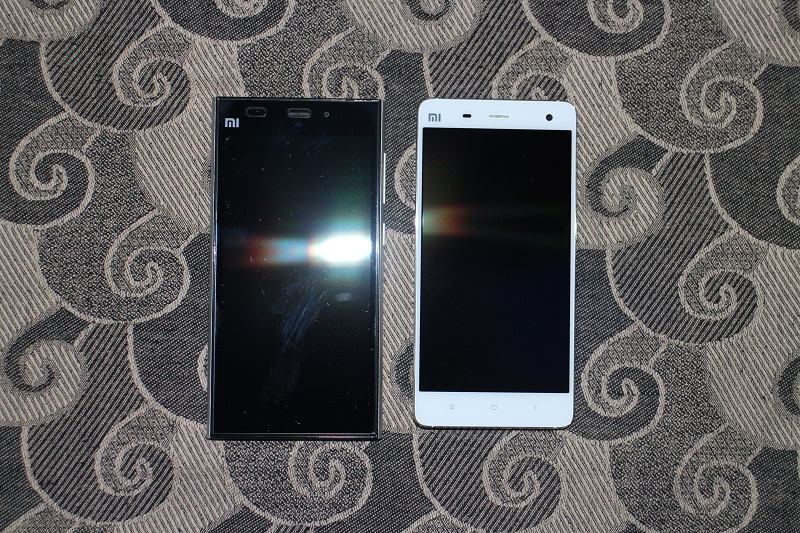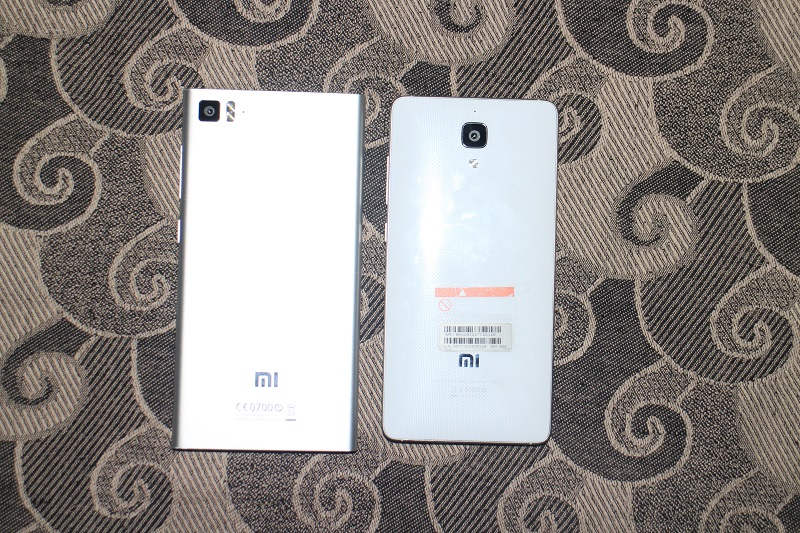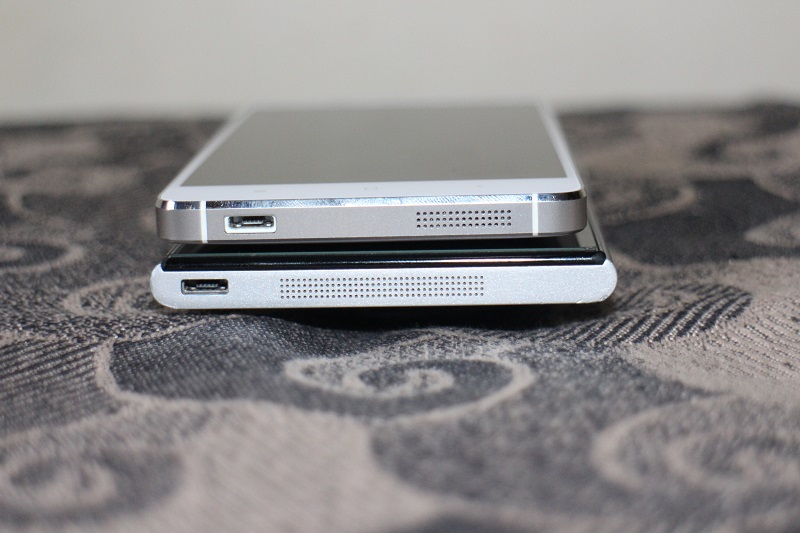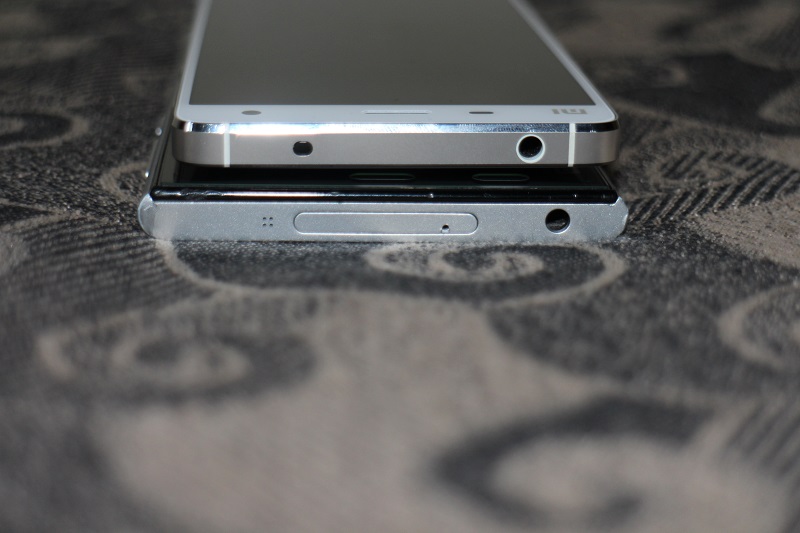Mi4 bridges the gap between midrange and high end smartphones
Few years ago, the difference between an entry level smartphone, mid range smartphone and high end smartphone was clear cut. Entry level phones came with small and/or low resolution display, mediocre amount of RAM, very slow processor that has one or two cores. These were meant for those who wanted to use an Android but cannot spend much on phone. Midrange phones came with better features but were still slower, low on features when compared to top end smartphone. Flagships were cause of major envy those days. Brilliant displays, powerful hardware, filled with latest and greatest features, these high end phones were favoured by 3rd party ROM developers too. Then came the Motorola Moto G and Xiaomi Mi3.
Moto G took the world by storm with its superb build quality, powerful hardware and great display and the price was just under 15k. Moto G also showed that a phone with Android is much better than a phone that has heavily modified variant of Android. Google also concentrated on making Android faster and more optimized (starting with Project Butter). Since JellyBean, a decent processor and 1GB+ RAM was enough to run Android in full glory and even to this day, a phone with good processor, 1GB of RAM can run KitKat and Lollipop without breaking a sweat. When Xiaomi launched Mi3 in India for 14k rupees, we were literally shocked. Mi3 had a Snapdragon 800 chip that was only used on high end hardware, 2GB of RAM, 16GB of onboard storage and brilliant 5” Full HD IPS display. These were the sort of features that are found in top end phone. The design did not raise eyebrows but whats under the hood turned out to be the talk of the nation. This opened the floodgates for phones that are powerful and sold via flash sales. The phone like Redmi Note, Yu Yureka, Redmi 1S, ASUS Zenfone series made many move away from paying through the nose for powerful phones.
The only problem here is that the design has become too generic. OEMs stopped splurging cash over design R&D and mid range phones from big brands are nothing but plasticized and scaled down versions of high end phones (that are again modified versions of yester year flagship devices). One who want to buy a cheap phone is not really concerned about the design and one who can splurge cash has handful of options (One M8, Xperia Z3, LG G3, iPhone 6 etc are gorgeous phones). But what about those who do not want phones that are too cheap and phones that are over priced? Those who want spend betweek 20k-30k are left without many ‘good’ options. Nexus 5 and Oneplus one are the only two options. While Nexus 5 is showing its age, OPO is not of the size that can fit in any hand. This is where Mi4 comes in.

The obvious question for many would be ‘Mi3 was priced at 14k when it was released last year, why should we pay 20k for Mi4?” Well, here are the differences
Build
While Mi3 build is generic, Mi4 build oozes quality. Both the devices have 5″ display but thanks to a much thinner bezel and tight packaging, Mi4 is smaller in size than Mi3 (w.r.t height and width). Mi4 feels solid in hand, feels sturdy and thanks to the metal frame, offers better grip. While Mi3 is made of unibody polycarbonate that is too plain, Mi4 has a front and rear glass held in place by a steel frame. The glossy/glassy rear panel of Mi4 has a diamond pattern behind the glass that gives a different look to the panel. The rear panel is user-swappable, though it takes a mighty effort to pull it out. Xiaomi has launched quite a few back covers (not yet in Indian market) that can be used to change the look of the phone. Though the rear panel is made of glass, it is shatter proof. As a matter of fact, our review unit fell on to marble floor from waist height (flat on back) and there wasn’t even a scratch on the back panel.

The steel frame that surrounds the phone is what makes this phone absolutely gorgeous. Such is the complexity of the build that $200 million was invested by Foxconn in equipment to manufacture Mi4.

Each frame of steel weighs 19 grams, made from 309 grams of steel board and it takes 32 hours to make. The manufacturing process has 40 steps and 193 processes. It took 18 months and 16 prototypes to get the design right. To make sure that the steel frame does not attract fingerprints and smudges, the frame is sand blasted using 7 types of sand, 5 kinds of grit, and compared to 100 groups blasting parameters.Take a look at this video to know the amount of effort that is put in to make the frame. “The Journey of a piece of steel”.
While the front of the phone feels absolutely clean and bright, the metal frame that surrounds the body gives it a premium feel. Overall, the phone feels solid in hand and doesn’t feel like a phone with 5” display. Mi4, with a 5” display is smaller than a Samsung Galaxy S5 that has a 5.1” display (and Samsung is famous for squeezing the phone size). The Mi4 weights 149 grams but the weight is evenly distributed to make sure that one handed operation is easy and does not cause pain for fingers/palm on extended use.
Display
The display of Mi4 is superior to Mi3’s in many ways. Colors feel live, text is crisper and Xiaomi used what is popularly known as zero-gap manufacturing process to gel the display panel to the top layer of glass and as a result, it feels as if the top layer of glass is producing the pixels. The lack of gap also improved sunlight legibility, reduced glare and also improved already stellar viewing angles. This video https://www.youtube.com/watch?v=qg3v5Ph0vbI explains what zero gap tech means. Given that there is no separate touchscreen layer, the touch sensitivity and response is elevated in Mi4. Xiaomi went with Corning Corning’s Concore glass which delivers outstanding damage resistance compared to soda-lime glass, which has been traditionally used for this touch technology while at the same time providing scrach resistance similar to Gorilla Glass.
Performance
The Snapdragon 801 on board Mi4 is slightly more powerful than the 800 onboard Mi3 but the extra gigabyte of RAM helps Mi4 trump Mi3. Thanks to extra gigabyte, multi tasking is better, applications load faster (not that it is slow in Mi3), games load faster.
Camera
The difference in camera department is massive. Though both have 13mp rear camera, Mi4 has a 1/3” sensor size, 1.12µm pixel size that takes better still images. Coming to video recording, Mi4 supports 4K resolution video recording(2160p@30fps), 1080p@30fps, 720p@120fps and this brings the awesomeness of Slo-Mo videos to Mi series. Mi4 comes with 8mp front facing camera that is a boon to selfie lovers. the front facing camera has an80 degree wide angle lens with f1.8 focal length and you can cover lot more faces in your selfies.
Infrared Port
Mi4 comes with infrared port that can be used to control your TV, media player, air conditioner etc. Support for truckload of TV, AC, DVD Player, set top box etc is built in. Xiaomi has added support for many TVs from Samsung, LG, Sony, Philips, Toshiba etc. Select the TV model, pair the remote and start using your phone as remote.

With Mi4, Xiaomi created a phone that looks much better, feels premium, is smaller in every dimension, more powerful, has more RAM, more features, far better front and rear camera when compared to Mi4. Even with lack of LTE and expandable memory via microSD card slot, the price of 20k feels justified. Just because the earlier phones are offered at a cheap price doesnt mean that Xiaomi should sell the Mi4 for a cheaper price. Xiaomi Mi4 is perfectly priced to bridge the gap between midrange and high end smartphones. Had Xiaomi launched Mi4 with LTE support for 20k-22k, it would have created a massive heart-ache for bigger brands that charge 30k+ for similar specced smartphones. Adding salt to the wound is the fact that Airtel’s 4G tariff plan is the same is 3G tariff and that Redmi Note that costs 10k supports 4G LTE. 4G LTE coverage in India is limited to few metros and if you are not in these zones or if you are not interested in going 4G, this is one phone that you should definitely try out. Our fully detailed review of Xiaomi Mi4 and MIUI 6 will be up soon.



